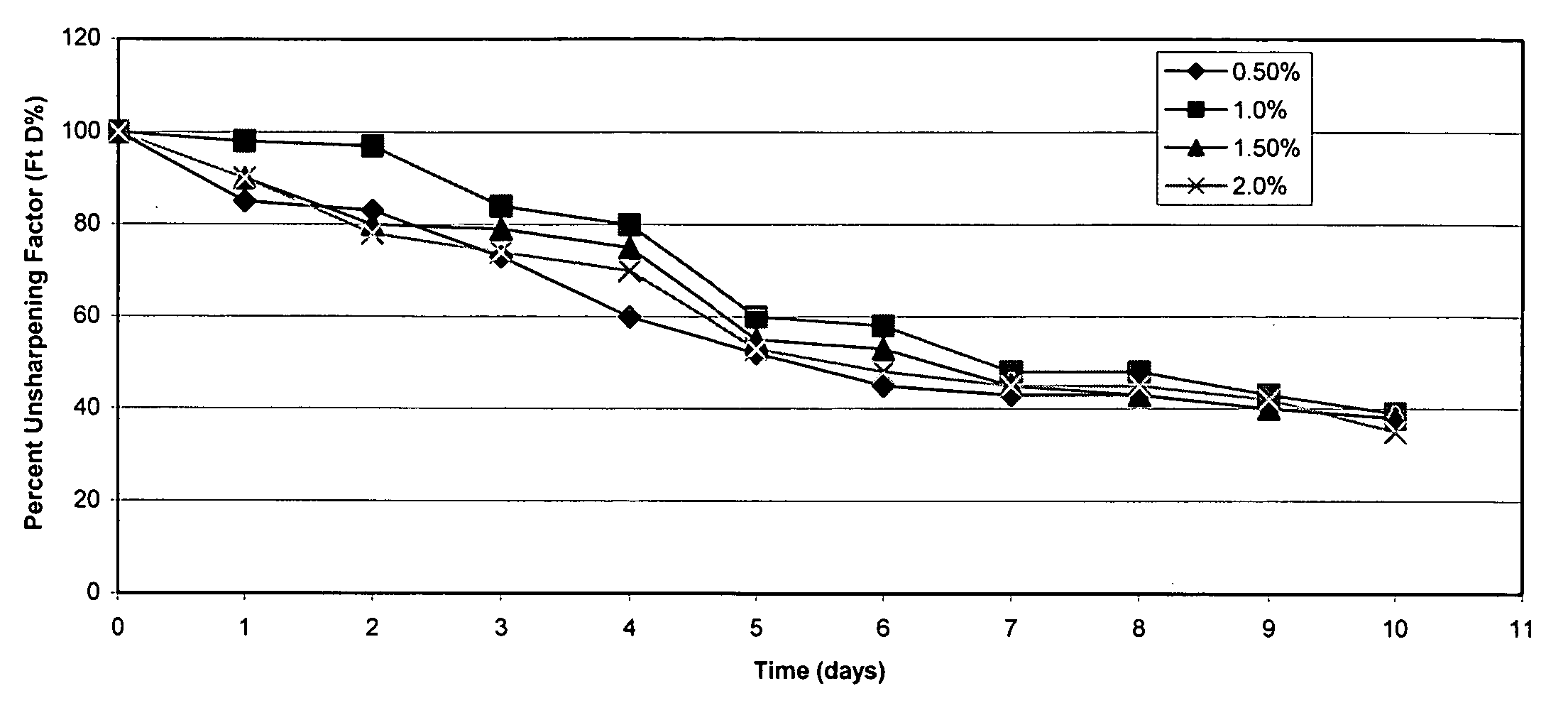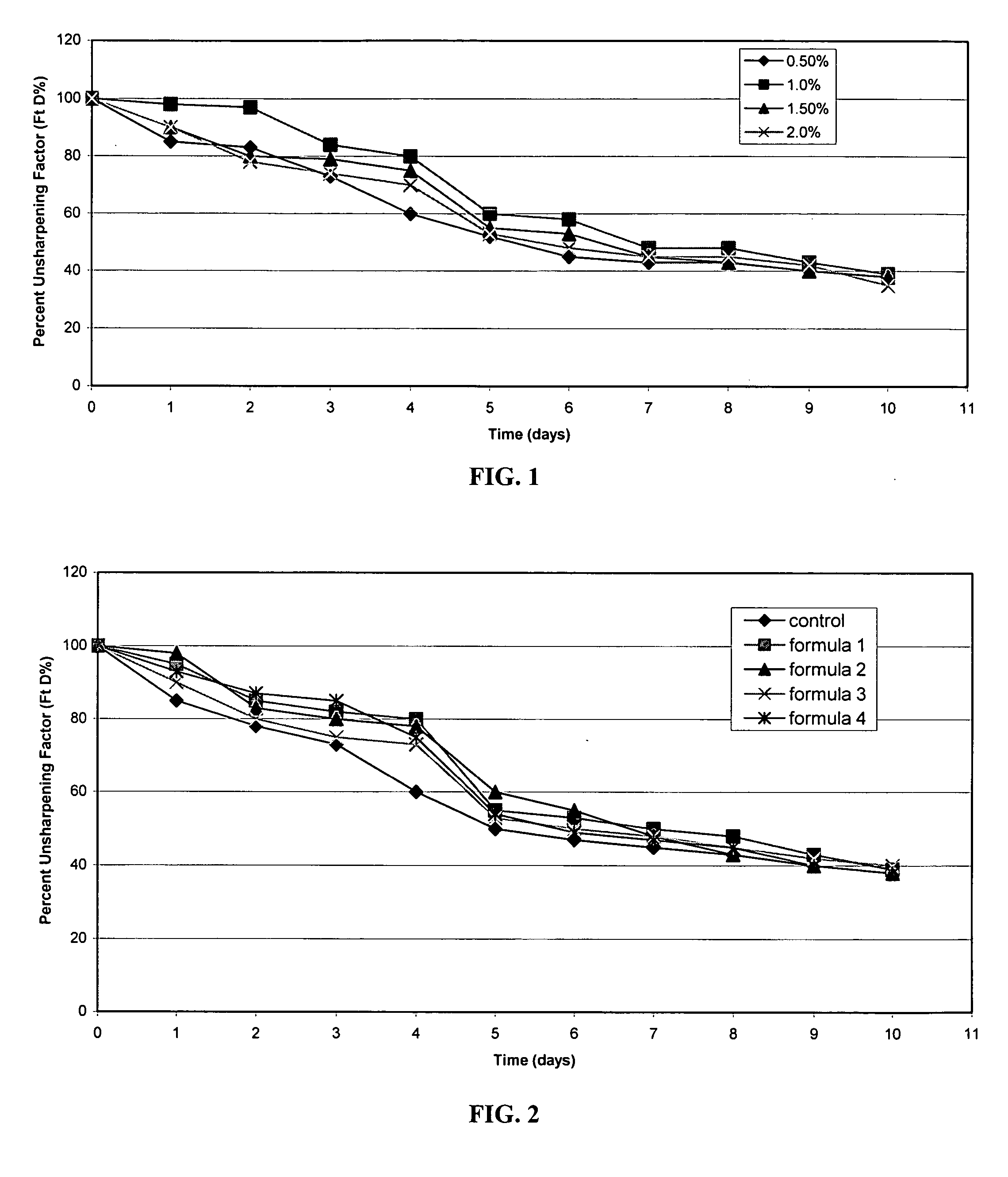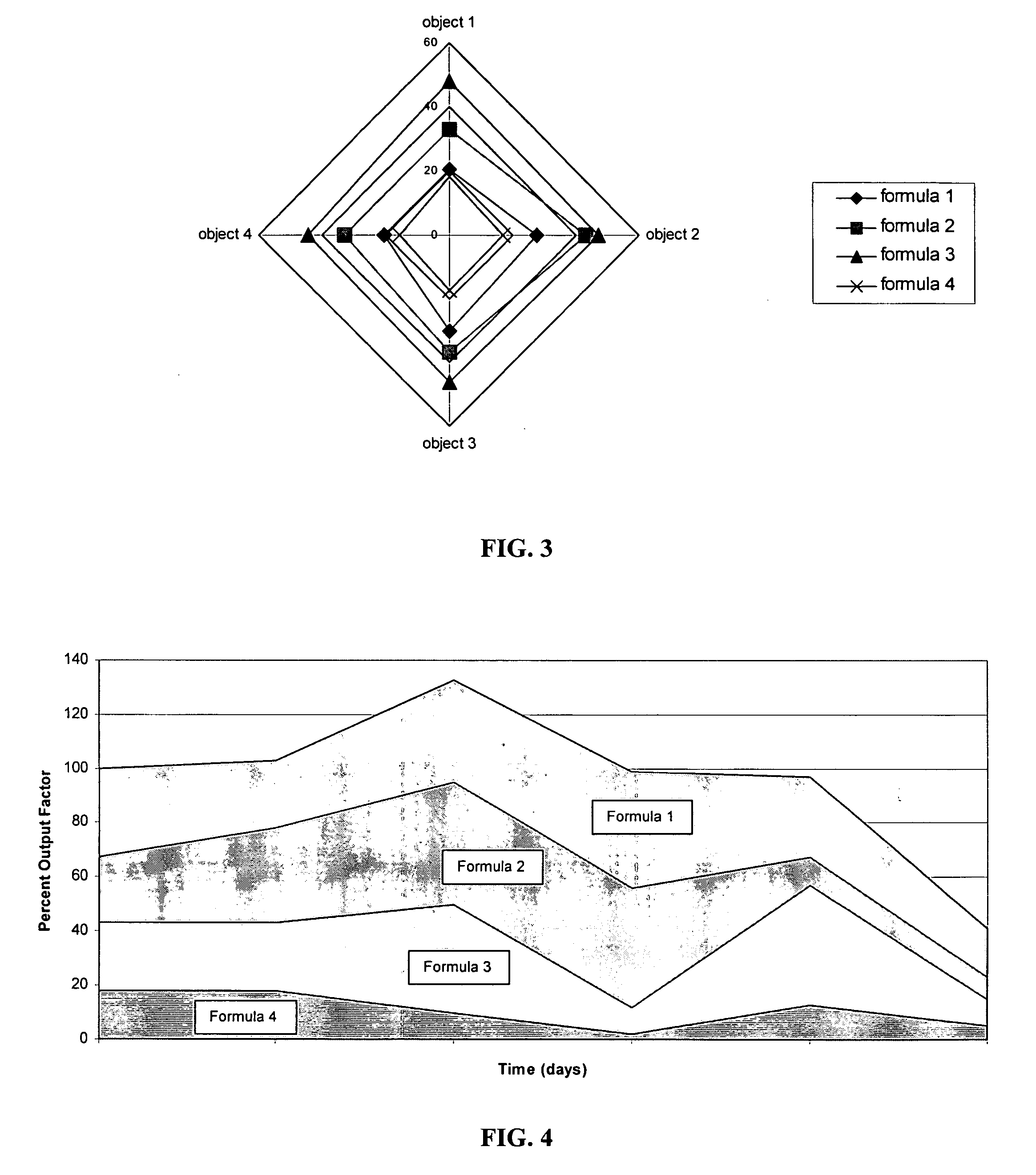Emulsion to preserve keen edge of a utensil
a technology of utensils and emulsions, applied in detergent compositions, mixing methods, detergent compounding agents, etc., can solve the problems of excessive rigidity of metals, limited application of cold deformation steels, and high cost of tool steels, so as to facilitate the longer service of utensils, preserve the sharpness of cutting edges, and reduce water contact
- Summary
- Abstract
- Description
- Claims
- Application Information
AI Technical Summary
Benefits of technology
Problems solved by technology
Method used
Image
Examples
example 1
Tests On Iron Cutlery
[0067] The effectiveness of the emulsion in preserving the sharpness of the cutting-edge for four different types of iron cutlery was evaluated. Specifically, four different formulations were evaluated and the ideal concentration of mineral oil was tested.
[0068] To determine the effects of the emulsion on tool steels, and to determine the amount of preservation of the cutting edge sharpness of the cutlery utensils, the sharpening thickness of the cutting edge was measured by means of high resolution optical microscopy. The cutting edge wear of the cutlery utensil (percent unsharpening factor) was calculated according to the following mathematical ratio:
Ft D %=(EFf / EFi).times.100% (Formula 1)
[0069] where:
[0070] Ft D %=Percent unsharpening factor
[0071] EFf=Thickness of the tool steels final cutting edge (after being used)
[0072] EFi=Thickness of the tool steels initial cutting edge (without being used)
[0073] Measurements were taken three tines a day for 10 days and...
example 2
Test On Stainless Steel Cutlery
[0077] The effectiveness of the emulsion in preserving cutting sharpness for four different types of stainless steel cutlery was evaluated. Specifically, four different formulations were evaluated.
[0078] As discussed above in Example 1, to determine the effects of the emulsion on the stainless steel utensils, and to determine the amount of preservation of the cutting edge sharpness of the cutlery utensils, the sharpening thickness of the cutting edge was measured by means of high resolution optical microscopy. The cutting edge wear of the cutlery utensil (percent unsharpening factor) was calculated according to Formula 1.
[0079] Measurements were taken three tines a day for 10 days and an average percent unsharpening factor was calculated. The friction tests were simulated in the laboratory with a wear ratio similar to that of normal use of the different metal utensils.
[0080] The effect of four different emulsion formulations in preserving the cutting e...
PUM
| Property | Measurement | Unit |
|---|---|---|
| weight percent | aaaaa | aaaaa |
| temperatures | aaaaa | aaaaa |
| angle | aaaaa | aaaaa |
Abstract
Description
Claims
Application Information
 Login to View More
Login to View More - R&D
- Intellectual Property
- Life Sciences
- Materials
- Tech Scout
- Unparalleled Data Quality
- Higher Quality Content
- 60% Fewer Hallucinations
Browse by: Latest US Patents, China's latest patents, Technical Efficacy Thesaurus, Application Domain, Technology Topic, Popular Technical Reports.
© 2025 PatSnap. All rights reserved.Legal|Privacy policy|Modern Slavery Act Transparency Statement|Sitemap|About US| Contact US: help@patsnap.com



